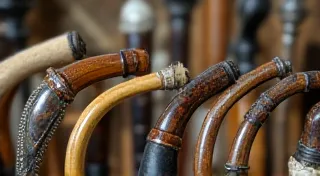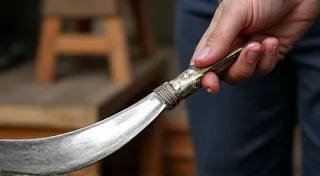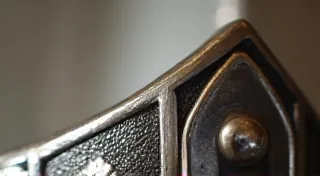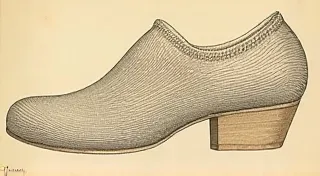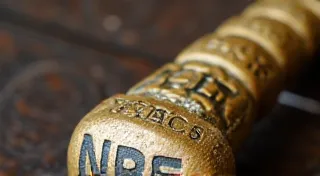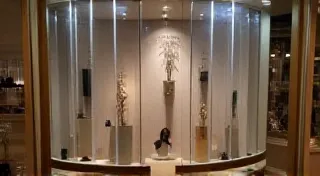Shoehorn Handles: Materials and Embellishments
A seemingly humble object, the shoehorn, often gets overlooked in the world of collectibles. Yet, for those who appreciate fine craftsmanship and a fascinating glimpse into fashion history, vintage shoehorns offer a rewarding niche. While the utilitarian function remains consistent—a tool to ease the slipping on of shoes—the handles of vintage shoehorns reveal a surprising array of materials and embellishments, reflecting the era’s aesthetic sensibilities and the wealth of the owner. This article delves into the diverse materials used for shoehorn handles and the intricate embellishments that transformed them from simple tools into miniature works of art.
The Foundation: Common Handle Materials
Before we explore the lavish details, let’s examine the foundational materials used to construct shoehorn handles. These were the workhorses of the shoehorn world, providing the necessary strength and functionality. Understanding these materials is crucial, and you might find our guide on identifying antique shoehorn materials helpful.
Horn
Perhaps the most ubiquitous material for shoehorn handles was horn, typically from the longhorn steer or similar livestock. Horn is durable, easily carved, and possesses a naturally elegant appearance. Its warm, honeyed tones offered a pleasing contrast to the leather shoes it served. The carving techniques varied from simple grooves to intricate floral or geometric designs. The inherent grain of the horn often dictated the design, adding a unique character to each shoehorn. Identifying a horn shoehorn is often straightforward due to the visible grain pattern and a characteristic, slightly porous texture.

Ivory
Ivory, predominantly from elephants (though sometimes walrus or other animals), held a place of high esteem in the 19th and early 20th centuries. Its smooth, creamy surface lent itself beautifully to detailed carving and provided a luxurious feel. Ivory shoehorn handles were often intricately carved with scenes, portraits, or elaborate ornamentation, reflecting the owner’s status and taste. The use of ivory has, understandably, become a sensitive subject in modern collecting. Identifying ivory shoehorn materials can be a challenge; for those interested in the finer details, you may find the guide on identifying antique shoehorn materials quite insightful.
Wood
While not as common as horn or ivory, wooden shoehorn handles certainly exist. Mahogany, rosewood, and ebony were favored for their richness and workability. Wooden handles often showcased the beauty of the wood grain itself, sometimes enhanced with a polished finish. Some wooden handles were also painted or inlaid with other materials, further increasing their decorative appeal.
Bakelite & Early Plastics
The early 20th century saw the introduction of new materials like Bakelite, one of the earliest plastics. These materials offered a more affordable alternative to natural materials like ivory and horn. Bakelite handles came in a range of colors, often bold and striking, reflecting the Art Deco aesthetic of the era.
Elevated Elegance: Precious Metals & Gemstones
For the discerning gentleman or lady, the shoehorn transcended its functional purpose, becoming a statement piece. This is where precious metals and gemstones enter the picture.
Silver
Silver was a popular choice for shoehorn handles, either as a solid construction or as an overlay or decoration on a core of horn or wood. Silver handles could be plain and polished, or elaborately chased with intricate designs. Hallmarks, indicating the silversmith and the year of manufacture, are often present, providing valuable information for dating and assessing the value of the shoehorn.
Gold
Gold shoehorn handles were, naturally, the pinnacle of luxury. Solid gold handles are rare and highly prized by collectors. Gold was often combined with other materials, such as ivory or gemstones, to create truly opulent pieces.
Gemstones
Gemstones were frequently incorporated into shoehorn handles to enhance their beauty and value. Diamonds, rubies, sapphires, and emeralds were used, either set into the metal framework or inlaid into the handle itself. The style of setting and the type of gemstone used reflected the prevailing fashion of the era.
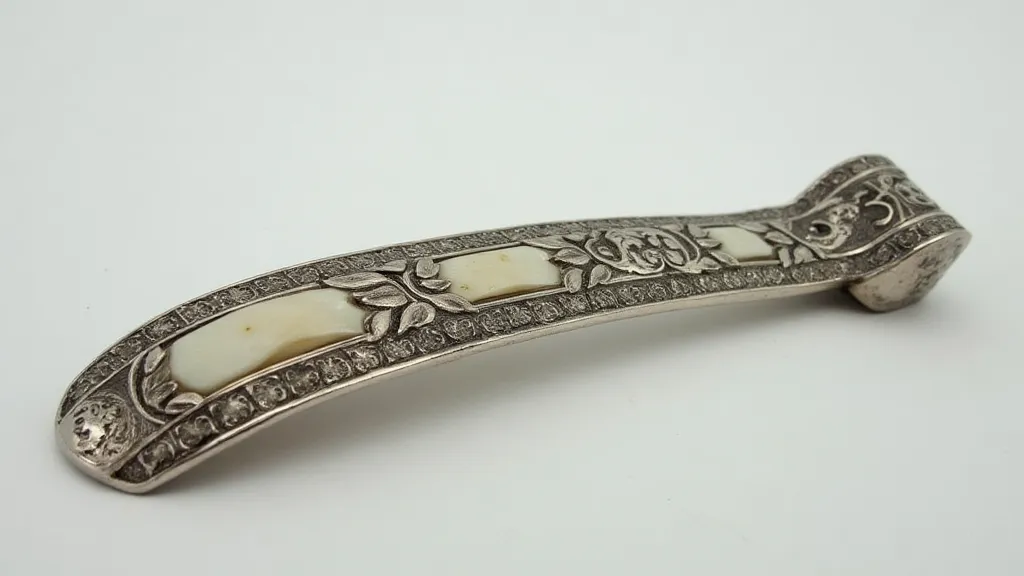
Embellishments and Decorative Details
Beyond the core material, a host of embellishments added to the unique character of vintage shoehorn handles.
Carving
As mentioned earlier, carving was a primary decorative technique. The level of detail varied greatly, from simple grooves to incredibly intricate scenes depicting landscapes, animals, or portraits. The skill of the carver significantly impacted the value and desirability of the shoehorn.
Inlay
Inlay involved inserting other materials into the handle, creating a contrasting design. Common inlay materials included mother-of-pearl, enamel, and even semiprecious stones.
Engraving
Engraving involved cutting designs into the surface of the metal, often used to create personalized monograms, family crests, or decorative patterns.
Chasing
Chasing is a metalworking technique where patterns are raised on the surface of the metal using tools. It’s a more time-consuming and skilled process than simple engraving.
Personalization
Many vintage shoehorns were personalized with initials, dates, or other meaningful inscriptions. These markings add a layer of provenance and historical significance, making the shoehorn even more appealing to collectors.
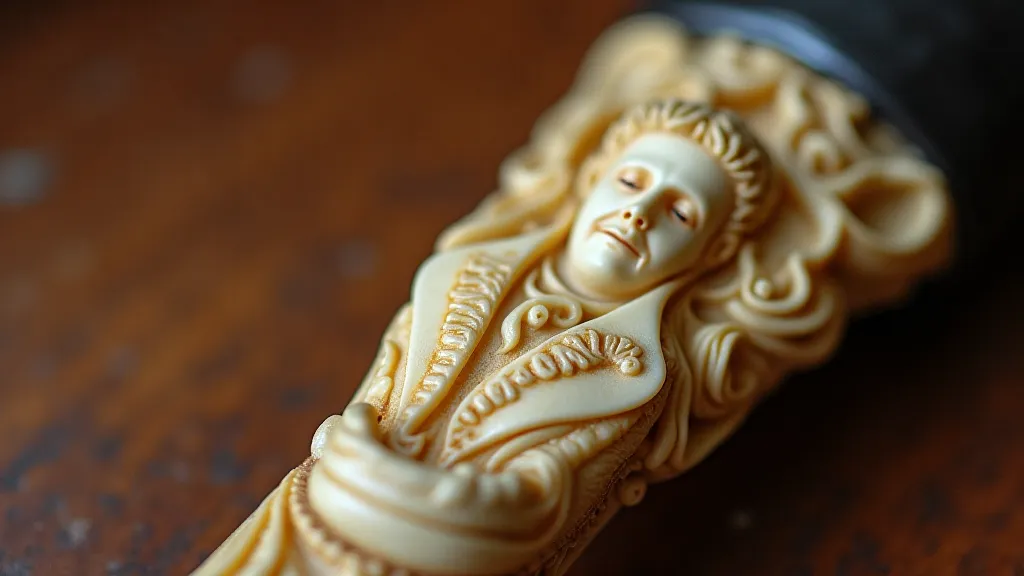
The Evolution of Shoehorn Design
The evolution of the shoehorn itself is a fascinating reflection of changing styles and technological advancements. Early shoehorns were largely utilitarian, with minimal embellishment. As fashion became more elaborate, so too did the shoehorn. The introduction of telescoping designs marked a significant shift, offering portability and convenience. If you're interested in learning more about these design innovations, our article on the rise and fall of the telescopic shoehorn delves into this intriguing aspect of shoehorn history. The ingenuity behind early patent applications also reveal a great deal about the era; you can explore these in our piece on shoehorn patents.
Identifying and Appreciating Vintage Shoehorn Handles
Collecting vintage shoehorns offers a fascinating window into the history of fashion and craftsmanship. Understanding the materials and embellishments used for the handles is key to appreciating their value and historical significance. Careful observation, research, and a keen eye for detail will allow collectors to uncover treasures and build a rewarding collection of these often-overlooked accessories. The variety of styles is remarkable – from the simple and functional to the ornate and extravagant – and you can explore these in more detail by reading our guide to shoehorn styles. Remember to be mindful of ethical sourcing when dealing with materials like ivory, and prioritize collecting pieces that tell a compelling story.
Beyond the materials and craftsmanship, the historical context of a shoehorn can add immeasurable value. Consider the social class of the owner – a finely crafted gold shoehorn with intricate gemstone detailing would likely have belonged to someone of considerable wealth and status. The designs themselves often reflect broader trends in art and design, from the Art Nouveau influence on organic, flowing lines to the geometric precision of the Art Deco period. Furthermore, personal inscriptions and hallmarks offer tantalizing glimpses into the lives of previous owners – who were they? What were their interests? These details transform a simple object into a tangible link to the past.
The study of shoehorn handles also presents a unique opportunity to appreciate the artistry of lesser-known craftspeople. While the names of renowned jewelers and silversmiths often grace the history books, the skilled carvers, engravers, and metalworkers who created the handles often remain anonymous. Their meticulous work, passed down through generations, represents a vital contribution to the history of decorative arts. By examining the details of their craft – the precision of the carving, the intricacy of the engraving – we can gain a deeper appreciation for their skill and dedication.
The resurgence in interest in vintage accessories, coupled with the growing appreciation for craftsmanship and historical detail, has led to a renewed enthusiasm for collecting vintage shoehorns. As more individuals seek to connect with the past and appreciate the beauty of handcrafted objects, the demand for these often-overlooked treasures is likely to continue to grow. For those who are new to the world of shoehorn collecting, there are numerous resources available to help them learn more about the history, materials, and styles of these fascinating objects. From online forums and collector groups to antique shops and auction houses, there is a wealth of information and expertise waiting to be discovered. With a little research and a keen eye for detail, anyone can embark on a rewarding journey into the world of vintage shoehorn collecting.
